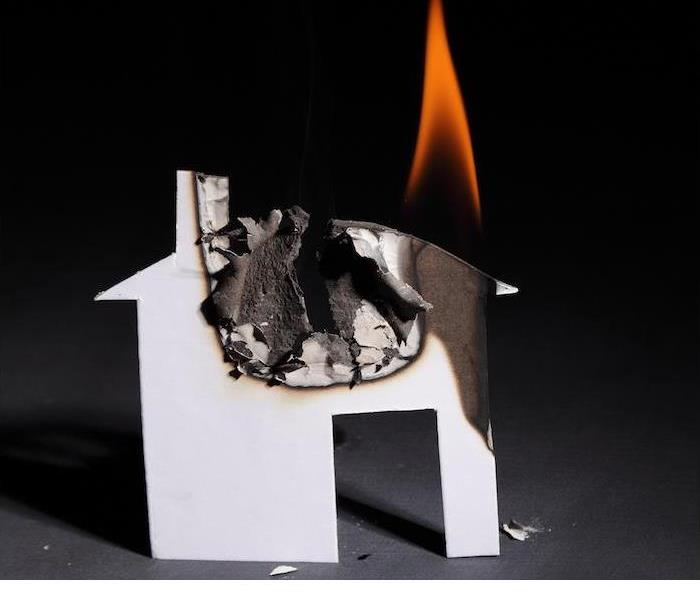Every Fire Is Constrained by These 4 Things
1/27/2022 (Permalink)
Fire seems like a wild, almost uncontrollable force—we use words like raging to describe it because it seems so wild. And while fires are certainly difficult to manage, the truth is that every fire has its limits, and every fire’s limits are the same. How can this be true?
Enter the fire tetrahedron. Its shape may seem a little random, but it only matters in that it represents the four equal things of which every fire consists.
Each side is a vital part every fire must have—and without any one side, a fire falls apart.
Fuel. Every fire requires that there be something consumable upon which it can act. In other words, a fire has to happen to something.
Heat. Whatever object or material a fire happens upon must first be heated to a high-enough degree that it combusts. Some objects’ flash points are lower than others, thus they combust more readily.
Oxygen. The combustion reaction requires oxygen, and the oxidation process (of converting said oxygen to carbon dioxide) has to happen not only once, but…well let’s not get ahead of ourselves.
Chemical Chain Reaction. All of the above conditions must not only be met, but maintained—in a chain reaction that must continue in order for a fire to survive.
Cool it. If a fuel source can be cooled by, say, pouring water on it, the fire can’t continue. The reestablishment of a thermal balance keeps the rate at which the fuel source rises in heat unable to compete with the rate at which it cools.
Smother it. Shielding a fire from the oxygen it needs keeps it from fueling the combustion and oxidation processes—so keep that fire blanket handy at home.
Starve it. When all a fire can readily eat has been devoured, it can’t continue. It stands to reason, then, that removing a fuel source is one way to mitigate a fire’s destructive potential.
Interrupt the chain reaction. As we said earlier, every fire has to have all these elements together, in a continual dance, in order to keep moving. As it turns out, there are certain compounds which, when introduced into a fire’s atmosphere, actually disturb the chemical chain reaction itself, causing the fire to hiccup and eventually halt.
If the fire tetrahedron makes a wreck of your home or business, we’re ready around the clock to help you recover. Contact SERVPRO anytime for fast, thorough cleanup and recovery after a fire.


 24/7 Emergency Service
24/7 Emergency Service
